GRAN CANARIA
Society

Society
Cities in GRAN CANARIA
| Maspalomas | Playa de taurito | Playa del ingles |
Popular destinations SPAIN
| Andalusia | Catalonia | Costa blanca |
| Costa brava | Costa del sol | El hierro |
| Formentera | Fuerteventura | Gran canaria |
| Ibiza | La gomera | La palma |
| Lanzarote | Mallorca | Menorca |
| Tenerife |
Society
Governance
In the year 1821 the Canary Islands became a province of Spain with Santa Cruz de Tenerife as its capital. Since 1927, the archipelago has been divided into two provinces: Santa Cruz de Tenerife with the four western islands of Tenerife, La Palma, La Gomera and El Hierro, also known as "Canarias Occidennales".
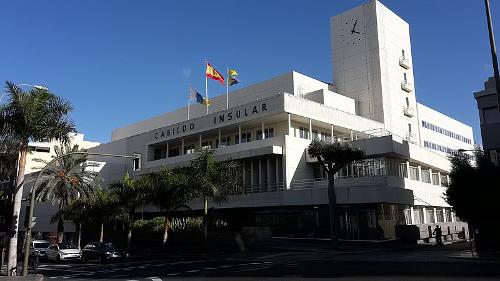 Cabildo Insular de Gran CanariaPhoto: Beta 15 CC 4.0 International no changes made
Cabildo Insular de Gran CanariaPhoto: Beta 15 CC 4.0 International no changes made
The province of Las Palmas de Gran Canaria consists of the three eastern islands of Gran Canaria, Fuerteventura and Lanzarote, also known as "Canarias Orientales".
Since 1983, the two provinces have been united in the Autonomous Region of the Canary Islands or "Comunidad Autónoma de Canarias". The Canary Islands will then have a limited autonomous status and a regional constitution.
The civil administration is located in the capital Las Palmas de Gran Canaria. In addition, Gran Canaria, like all other islands, has an island council, the 60-seat "Cabildo Insular".
The Canary Islands are represented in the Spanish Parliament with 14 of the 350 seats and in the Senate with 11 of the 255 seats. Each island is divided into municipalities ("municipios"), headed by a mayor ("alcalde"). In total there are 77 municipalities; Tenerife has the most with 31 municipalities, El Hierro with 2 the least. For the current political situation of Spain see chapter history.
Education
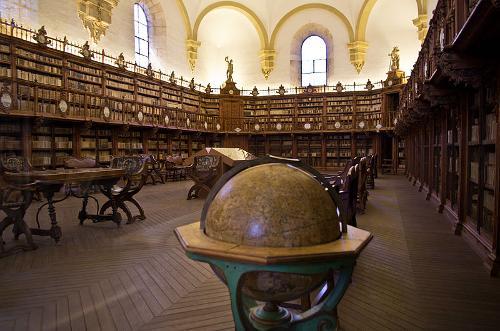 Library of the University of SalamancaPhoto: Antoine Taveneaux CC 3.0 Unported no changes made
Library of the University of SalamancaPhoto: Antoine Taveneaux CC 3.0 Unported no changes made
Education in Spain has long lagged behind the rest of modern Europe. Especially the countryside, where the distances are great and the connections were poor, had a large number of illiterate people. The money spent on education also contrasted sharply with other countries in Europe. The turnaround started from 1962 under the Franco regime. In barely fifteen years, the budget for education has increased by 100%. Illiteracy, especially among the elderly, was tackled by the Servicio de Educación Permanente de Adultos. This organization provides lower education courses for the elderly. Moreover, control over education is in the hands of the autonomous governments. Distance education, the Educación de Distancia ", also ensures that more and more people can make use of the education system, and that applies to primary to university education. In 1999, more than 130,000 people followed university education in this way through the Universidad Nacional de Educación de Distancia, which even has branches abroad.
One third of the pupils attend private schools owned by private individuals or religious. Most of these schools are 100% funded by the government. They are then obliged to have a school board and in principle to admit every student. Education at the state schools is free.
According to the new education law of 1990, the Ley Orgánica de Ordenación General del Sistema Educativo (LOGSE), there are the following school types in Spain:
First of all, the Educación Infantil, the pre-school and nursery education. This non-compulsory education consists of a three-year or six-year cycle.
This is followed by Educación Primaria, the primary education that is provided from six to twelve years old and is compulsory. There are three cycles of two years each, with a number of compulsory and a number of optional subjects. The introduction of a foreign language is already started in group three.
Compulsory secondary education is the Educación Secundaria Obligatoria (ESO), from 12 to 16 years old, after which compulsory education ends. The ESO has two two-year cycles. The second cycle contains most of the courses taught in the first cycle, supplemented with a number of electives that increase to 30%.
After the ESO, the pupils receive a certificate that gives access to the "Bachillerato". One can then also study at vocational training courses.
The Bachillerato gives access to the university. One gets compulsory core subjects and subjects of the direction one chooses: engineering, art, natural sciences or social sciences. Moreover, there are again a number of electives.
Secondary vocational education, the Formación Profesional Grado Medio, is not very popular in Spain. It takes an average of about two years and the pupils, in addition to general subjects, mainly receive vocational subjects.
Higher professional education or Formación Profesional Grado Superior can be followed with a Bachillerato diploma.
University education is divided into three cycles:
After the first three years one is "Diplomado" and with that obtained diploma the second cycle can be followed, which lasts two years. One is then a "Licenciado", roughly comparable to our master's degree. After this one can continue studying for the title of "Doctor".
Spain currently has 62 universities, 19 of which are private. The University of Salamanca is the oldest in Spain and dates back to 1218. The Universidad Complutense of Madrid / Alcalá is one of the largest in the world with more than 100,000 students. Other major universities are those of Barcelona, Valencia, Seville, Granada and País Vasco. The number of university students has doubled in ten years to more than 1.5 million in 1999.
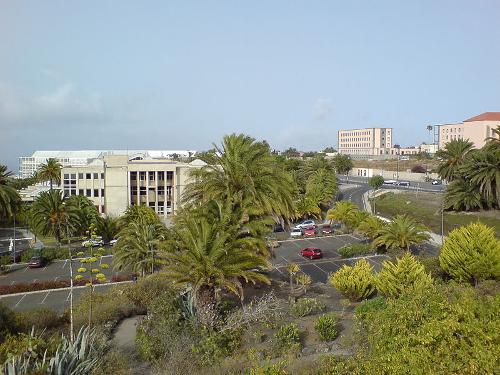 Universidad de Las Palmas de Gran CanariaPhoto: Pepelopex CC 3.0 Unported no changes made
Universidad de Las Palmas de Gran CanariaPhoto: Pepelopex CC 3.0 Unported no changes made
The University of Las Palmas ("Universidad de Las Palmas de Gran Canaria") was founded in the period 1989-1990. On April 26, 1990, the university was officially recognized by the Canary Parliament. The university merged with the already existing polytechnic university and the different university centers were then distributed across the archipelago.
The university now consists of 19 centers, some of which are more than a hundred years old. The first university in the archipelago was founded in La Laguna in 1817. Las Palmas currently has four campuses: Tafira, Obelisco, San Cristóbal and Montaña Cardones.
Typical of the Canary Islands
LUCHA CANARIA
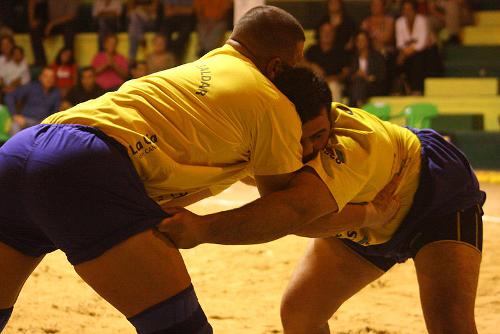 Lucha Canaria Gran CanariaPhoto: Lexthoonen CC 3.0 Unported no changes made
Lucha Canaria Gran CanariaPhoto: Lexthoonen CC 3.0 Unported no changes made
Lucha Canaria is a Canarian "Guanche" wrestling sport that is only practiced on these islands. Twelve wrestlers ("luchadores") from two teams compete in pairs in a circle (15 meters in diameter) marked out with sawdust. The aim is to get the opponent to the ground within three minutes with certain grips. Whoever wins two of the three matches has won.
Other traditional sports include stick fencing or "juego del palo", cockfighting, mast climbing and long jump with a lance.
GOFIO
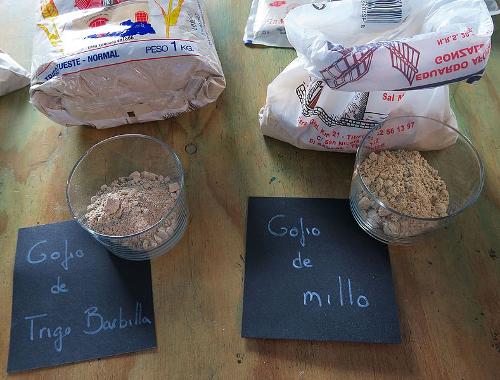 Gofio, Gran CanariaPhoto: Malopez 21 CC 4.0 International no changes made
Gofio, Gran CanariaPhoto: Malopez 21 CC 4.0 International no changes made
Gofio is the oldest surviving staple food of the Canary primeval population. This very perishable dish consisted of barley grain flour, but nowadays only corn. Gofio is still sold in supermarkets, but is not often on the menu in traditional restaurants.
Sources
Anderson, B. / Gran Canaria
Deltas
Evers, K. / Gran Canaria, Fuerteventura, Lanzarote
Gottmer/Becht
Gruschwitz, B.F. / Canarische Eilanden
Het Spectrum
MacPhedran, G. / Gran Canaria
Kosmos-Z&K
Rokebrand, R. / Reishandboek Gran Canaria
Elmar
Weniger, S. / Gran Canaria
Van Reemst
CIA - World Factbook
BBC - Country Profiles
Copyright: Team The World of Info